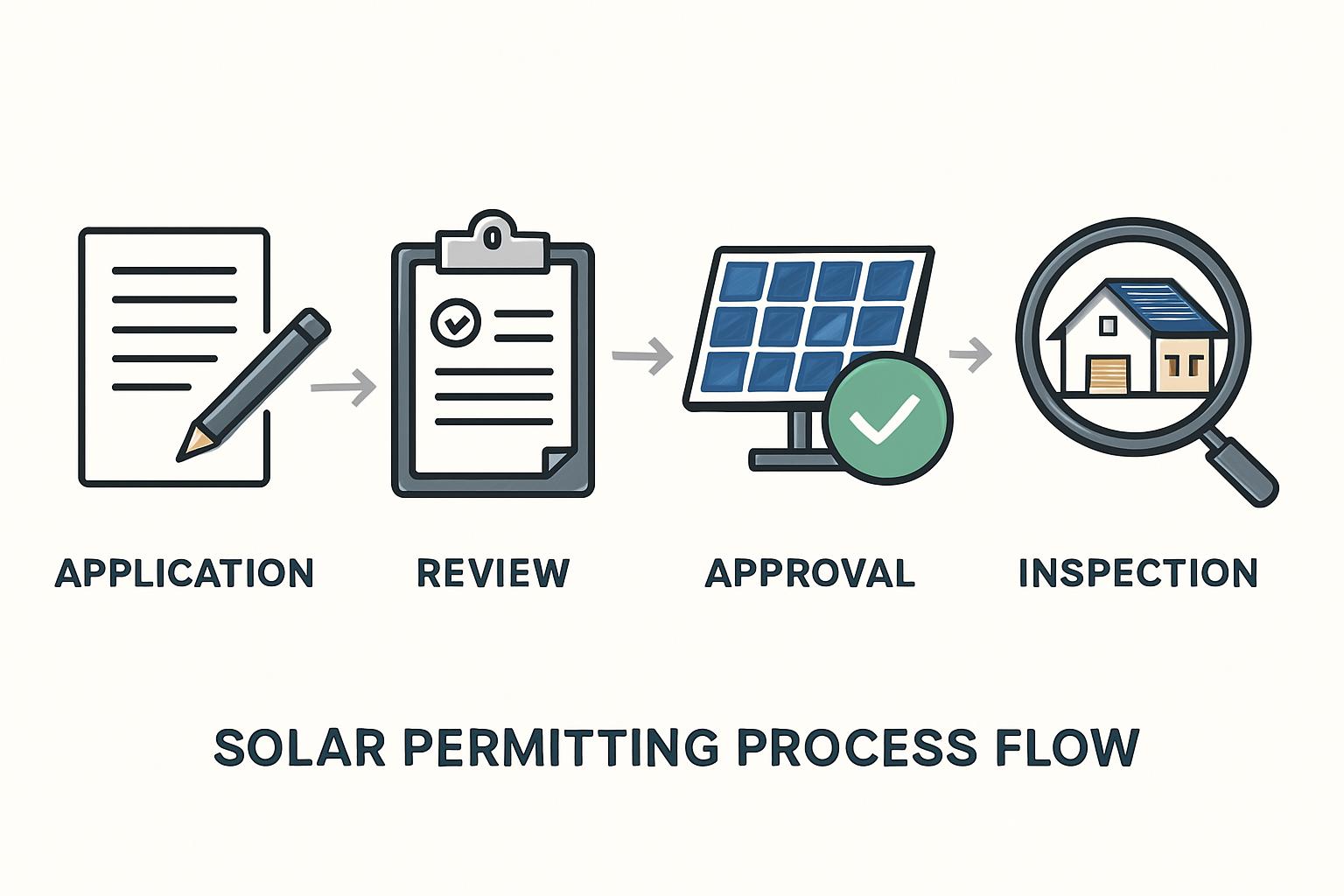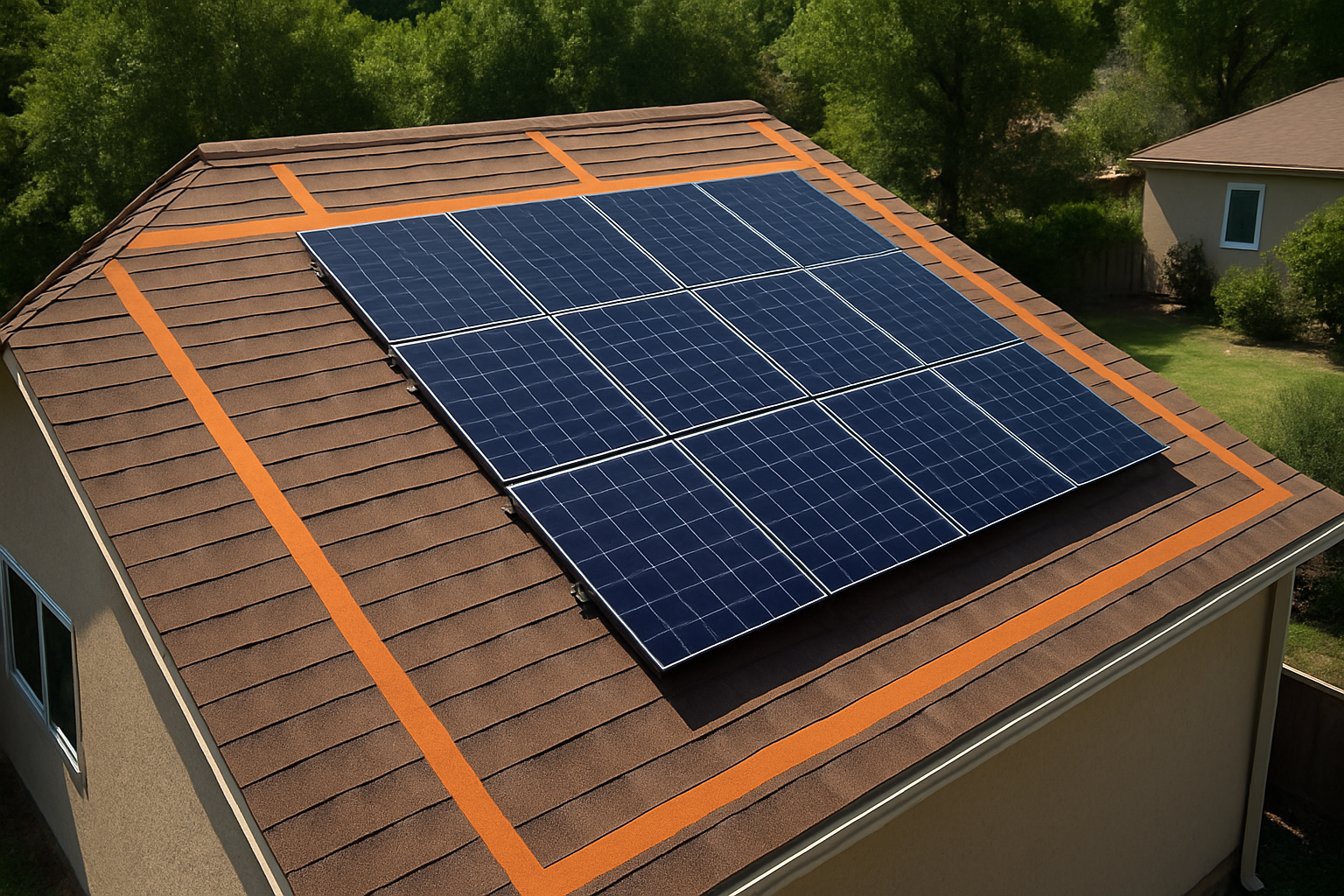Embracing solar energy offers a path to energy independence and environmental benefits. However, the journey to a fully operational solar system often involves navigating a complex landscape of regulations. Understanding solar rights, Homeowners Association (HOA) rules, and the impact of shade on permitting is crucial for a smooth installation. Overlooking these elements can lead to delays, increased costs, or even project denial.
This article provides practical insights into these permitting risks, helping you prepare for a successful solar energy system installation. We focus on empowering you with the knowledge to address potential hurdles proactively.

Solar Rights: Your Foundation for Energy Independence
The concept of “solar rights” is fundamental for homeowners considering solar energy. These rights refer to your ability to install solar energy systems on your property, even when subject to private restrictions like covenants or local ordinances. Historically, there is no common-law right to sunlight, making specific statutory protections essential for solar users.
Understanding Solar Access Laws
Solar access laws are state-level regulations designed to prevent unreasonable restrictions on solar installations. These laws vary significantly by state, but their core purpose is to protect a homeowner's ability to harness solar power. For example, states like California, Florida, and Arizona have enacted solar access laws that limit the power of HOAs to prohibit solar energy devices.
It is important to distinguish solar access laws from solar easements. Solar access laws broadly limit restrictions on solar panel installations, often by HOAs or local zoning. In contrast, solar easements are voluntary legal agreements between property owners. They protect a property's access to sunlight from obstructions like growing trees or new structures on a neighbor's land.
For instance, California's Solar Rights Act limits the ability of HOAs and local governments to restrict solar installations and requires expedited permitting for small residential rooftop solar systems. Similarly, Florida Statute 163.04 prohibits entities from denying permission to install solar collectors. Utah's Solar Access Amendments limit HOA rules if they decrease system production by more than 5% or increase costs by more than 5%.
Navigating Legal Frameworks
Even with solar access laws in place, you may still encounter local regulations or HOA bylaws. These laws often allow for “reasonable restrictions” on solar systems, provided they do not significantly increase the system's cost or decrease its efficiency. Understanding these nuances is critical. For example, an HOA might dictate panel placement to the back of a home's roof for aesthetic reasons. However, if you can prove this placement reduces annual energy production by more than 10% using a modeling tool, you may petition for an alternate location.
Homeowners Associations (HOAs): Gatekeepers of Rooftop Solar
Homeowners Associations play a significant role in many communities, aiming to maintain property values and aesthetic uniformity. This often means solar panel installations require HOA approval, which can sometimes present challenges.
Common HOA Restrictions and Their Validity
HOAs frequently cite aesthetic concerns as a reason to restrict solar panels. They might argue that solar panels detract from the community's appearance. However, studies show that homes with solar panels can actually sell for an average of 4% more than homes without them, countering the 'lower property value' argument.
Common restrictions HOAs impose include mandating flush-mounted panels, prohibiting ground-mounted systems, requiring installations to be invisible from public roadways, or demanding equipment that matches the roof color. While HOAs generally cannot outright ban solar panels in states with solar access laws, they can enforce reasonable design and placement guidelines. For example, Texas law allows HOAs to designate placement if it doesn't significantly impact performance.
Strategies for Successful HOA Approval
Securing HOA approval requires a proactive and informed approach. Here are some strategies:
- Review Your HOA Covenant: Understand existing guidelines for home improvements. If solar panels are prohibited, state laws may allow for exceptions.
- Present a Strong Case: Provide visual mock-ups of your proposed installation to address aesthetic concerns. Highlight how modern solar panels are sleek and unobtrusive.
- Demonstrate Value: Share data on how solar installations can increase property values and reduce energy costs.
- Work with Your Installer: Many reputable solar installers handle HOA paperwork and can help navigate the approval process. They can provide necessary documentation, site plans, and technical specifications.
- Seek Compromise: If initial plans are rejected, explore compromises like panel placement or system size, but ensure these do not significantly compromise energy production.
- Understand Your Rights: Familiarize yourself with your state's solar access laws. If an HOA denies an application without valid grounds, they may be violating the law.
The Shadowy Side of Solar: Shade Permitting Risks
Shade is a critical factor influencing solar panel performance and, consequently, permitting requirements. Even partial shading can significantly reduce energy output, affecting the economic viability and efficiency targets of a solar project.
How Shade Impacts System Performance and Permitting
Solar cells within a panel are typically connected in series. When even one cell is shaded, its voltage drops, limiting the current through the entire string of cells. This phenomenon, sometimes called the “Christmas light effect,” means a small amount of shade can disproportionately reduce the output of the entire panel or even the entire array. Experts suggest homeowners could lose as much as 40% of potential solar generation due to shade.
Permitting authorities require detailed site assessments that include shade analysis to ensure the proposed system meets performance expectations. City planning procedures should also consider shading from other buildings and natural obstacles to allow maximum utilization of rooftop solar. According to Unlocking the Economic Potential of Rooftop Solar PV in India, city planning should adjust to allow maximum utilization of RTS on new buildings, with analysis including rooftop construction and shading.
Mitigating Shade: Design and Technology Solutions
Addressing shade effectively is vital for both system performance and permitting approval. Modern solar systems incorporate technologies to mitigate shade's impact:
- Bypass Diodes: Most modern solar panels include bypass diodes that allow current to flow around shaded cells, preventing complete power loss.
- Microinverters and Power Optimizers: These Module-Level Power Electronics (MLPEs) allow each solar panel to operate independently. If one panel is shaded, it does not limit the production of other unshaded panels in the array, significantly improving overall system efficiency in shaded conditions.
- Shade Analysis Software: Advanced tools can accurately model shade patterns throughout the year, helping designers optimize panel placement and predict energy output. This data is often required for permitting.
Careful system design, integrating solutions like advanced lithium batteries and energy storage systems (ESS), can also enhance resilience. Even with some shade, an integrated ESS can store surplus energy during peak sun hours, providing reliable power when needed.
Streamlining Your Solar Permitting Journey
The permitting process ensures solar installations are safe, compliant with building codes, and properly integrated with the electrical grid. While specific requirements vary by municipality, understanding the general process helps avoid delays.
Essential Permits and Documentation
Most solar installations require at least two primary permits:
- Building Permit: This confirms your installation complies with structural and construction codes, covering aspects like roof load, mounting equipment, and fire access pathways. Your roof must handle the additional weight.
- Electrical Permit: This covers the system's design and wiring, ensuring compliance with the National Electrical Code (NEC). It addresses conductor sizing, breaker placement, grounding, and safe utility interconnection.
Required documentation typically includes detailed system designs, specifications, electrical diagrams, site plans, and, if applicable, HOA approval. Errors in applications or outdated codes can significantly delay permits.
Proactive Measures for Risk Mitigation
To navigate the permitting process efficiently:
- Early Research: Understand local and state-specific permit requirements and solar access laws before starting your project.
- Professional Partnership: Work with experienced solar installers who are familiar with local regulations and can manage the permit application process on your behalf.
- Comprehensive Documentation: Ensure all required plans and specifications are accurate and complete before submission.
- Communication: Maintain open communication with your installer, HOA, and local permitting office.
The World Energy Investment 2023 report highlights that permitting has been a key concern for investors and financiers, with substantial renewable capacity waiting for permits. Governments are actively enacting policies to address these delays. Streamlining these processes is crucial for accelerating renewable energy adoption.
Achieving Reliable Energy with Smart Planning
Successfully installing a solar energy system requires careful consideration of solar rights, HOA regulations, and shade impacts. By understanding the legal landscape, engaging proactively with HOAs, and implementing smart design choices to mitigate shade, you can significantly reduce permitting risks. This informed approach ensures your solar project moves forward efficiently, contributing to a more sustainable and energy-independent future for your property.
Frequently Asked Questions
Can an HOA completely prohibit solar panels?
In many states, no. Solar access laws prevent HOAs from outright banning solar panel installations. However, HOAs can impose “reasonable restrictions” on design, placement, and aesthetics, as long as these do not significantly increase costs or reduce system efficiency.
What is the difference between solar rights and solar easements?
Solar rights are statutory protections that allow property owners to install solar energy systems despite private restrictions. Solar easements are voluntary legal agreements between neighbors that protect a property's access to sunlight from obstructions on adjacent land.
How does shade affect solar panel efficiency?
Even partial shade on a single solar cell can significantly reduce the power output of an entire panel or string of panels due to their series connection. This can lead to substantial energy production losses.
What technologies help mitigate the impact of shade on solar panels?
Modern solar panels often include bypass diodes. Additionally, Module-Level Power Electronics (MLPEs) like microinverters and power optimizers allow individual panels to operate independently, minimizing the impact of shade on the overall system's performance.
What permits are typically required for a residential solar installation?
Most residential solar installations require a building permit to ensure structural integrity and an electrical permit to ensure compliance with electrical codes and safe grid interconnection. Zoning permits may also be necessary depending on local regulations.
Is a professional solar installer necessary for navigating permitting?
While not always legally required for homeowners to submit permits themselves, working with an experienced professional installer is highly recommended. They possess expertise in local codes, permit applications, and can often streamline the approval process with HOAs and authorities.





Leave a comment
All comments are moderated before being published.
This site is protected by hCaptcha and the hCaptcha Privacy Policy and Terms of Service apply.